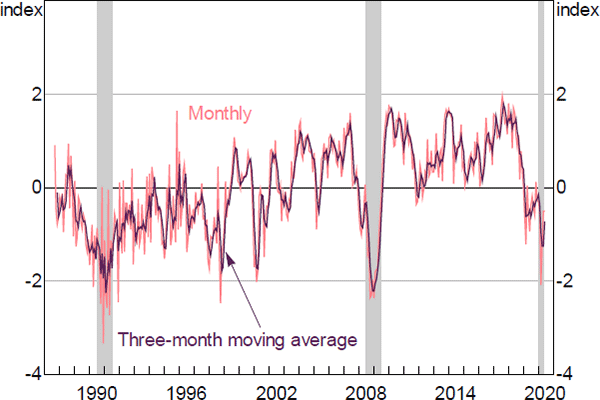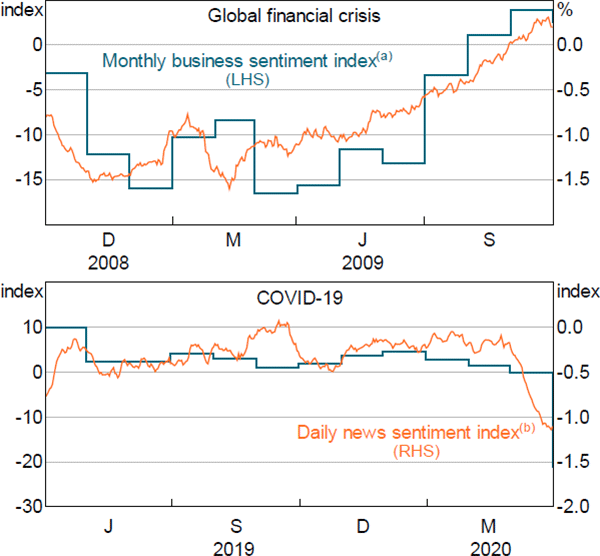RDP 2020-08: Start Spreading the News: News Sentiment and Economic Activity in Australia 3. Is the News Sentiment Index Useful for Nowcasting?
December 2020
- Download the Paper 1.48MB
The news sentiment index clearly moves with fluctuations in economic conditions at a monthly frequency, with sharp declines in economic downturns, such as the early 1990s recession, the 2008–09 global financial crisis (GFC) and the pandemic-led contraction more recently (Figure 2).
The NSI can also be constructed on a daily basis. Because of this, the NSI has the potential to identify turning points in economic activity before other partial indicators, such as survey-based sentiment measures that are available on a monthly basis. For example, based on a (one-sided) 30-day moving average, the NSI was pointing to a sharp drop-off in activity caused by the COVID-19 pandemic in early March, well before the public release of the business survey results at the end of March (Figure 3, bottom panel). Similarly, the one-sided 30-day moving average of the NSI appeared to pick the turning point in economic activity in February 2009, before there were clear signs of a recovery in sentiment based on the business surveys (Figure 3, top panel).[4]

Note: Shaded areas represent the early 1990s recession, the 2008–09 global financial crisis and the COVID-19-led contraction
Sources: Authors' calculations; Dow Jones Factiva

Notes:
(a) Based on NAB business conditions survey
(b) Thirty-day moving average
Sources: Authors' calculations; Dow Jones Factiva; NAB
Footnote
The NAB survey typically surveys respondents in the last week of the month, so the NSI has the advantage of picking turning points earlier in any given month because of this timing difference. [4]